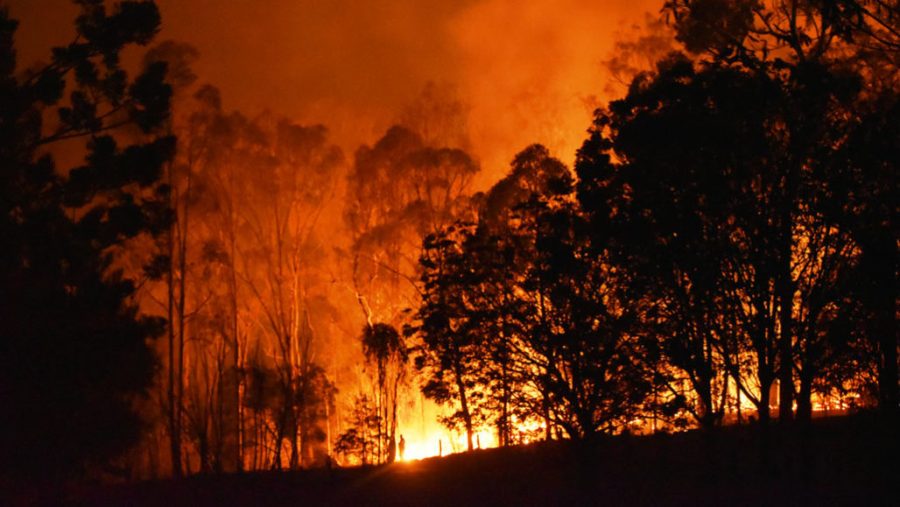The Australian Bushfires; Called to Action
February 19, 2020
Imagine being trapped in a movie theater surrounded by smoke with your family for six days straight. A young mother Meaghan Wegg and her family faced this horrifying reality while traveling to the Australian town of Mallacoota from Montreal, Canada. Gianluca Mezzofiore from CNN reports, “Ash was falling from the building’s air vents, covering around 500 people inside — they were exhausted and overheated from fleeing the approaching fire.” Wegg says, “We got here and it felt like a death trap to be honest.” Though, this “death trap” of an overall environmental disaster may seem insignificant or “far away” to us here in the United States, this issue will intensify the challenge our world is currently facing of the extinction of animal species and the destruction of wildlife and communities as a result of our carbon footprints.
One of the many animals facing a major decrease in population is the koala. These natives to the Australian Outback have an instinct to climb the trees of the region. One of their most common resting places, the Eucalyptus Tree, produces a good amount of oil which likely served as a source of ignition to the fires spreading across the region. According to Ecologists in Finders Chase National Park , “25,000 koalas–half the island’s population– may have been killed.”
Not only have many animal species like the koalas and their habitats been destroyed by the fires, but homes and towns have been demolished. According to Damien Cave and Livia Albeck-Ripka of the New York Times, “The sheer relentlessness of the fires — which have burned more than 15 million acres, killed at least 24 people and destroyed about 2,000 homes — is increasingly pushing Australia beyond crisis mode into a jumble of contemplation, anger and traumatized fatigue.” This increasing sense of “anger and traumatized fatigue” is evident in a quote by Sulari Gentill, a novelist with a husband and a son who are volunteer firefighters in Batlow as she says, “It’s like the fire is a sentient being, it feels like it’s coming to get us.”
Although this tragedy has already devastated much of Australia and its wildlife, many organizations continue to work tirelessly to aid the nation of Australia. Among these organizations are the Australian Red Cross, GIVIT, the Salvation Army Australia, the St. Vincent de Paul Society, and the NSW Rural Fire Service. Their services are supported partially by our contributions and, by contributing to the efforts of these organizations, you can help to aid Australia even from thousands of miles away. The Australian Red Cross, for example, is accepting donations to its Relief and Recovery Fund which, according to the New York Times, “has helped to send 1,285 staff members and volunteers to communities affected by the fires and to provide support to displaced people sheltering in more than 69 evacuation and recovery centers.”
As the Australian bushfires continue to rage, the nation of Australia is going to continue to need aid in fighting this environmental tragedy. Although, the issue may seem “far away,” our world’s battles against extinction of animals and destruction of wildlife will intensify if we do not work together to stop the fires and aid those affected. With so many opportunities to help through volunteering and donation, it would be a disservice to our natural world, for us not to contribute. We have been called to action and we must act!
Link to donate to Australian Red Cross Donations







